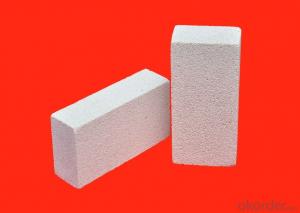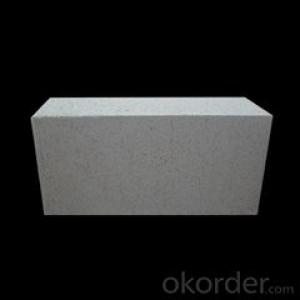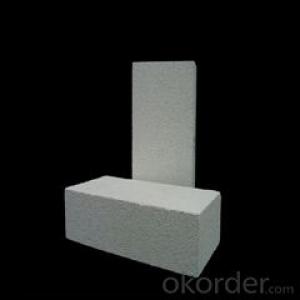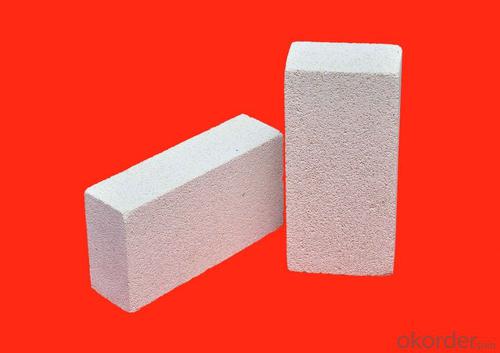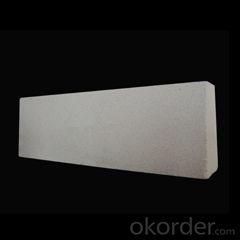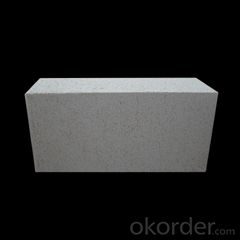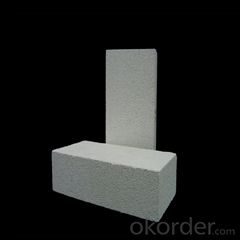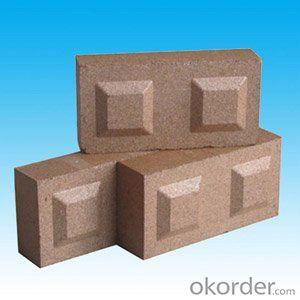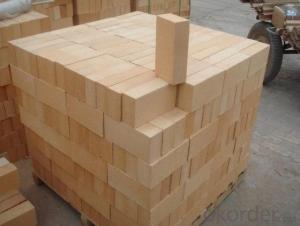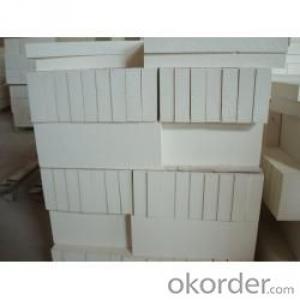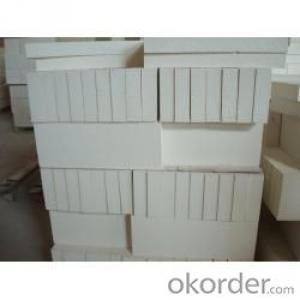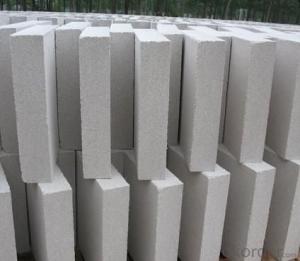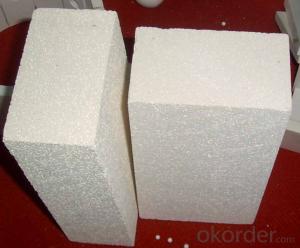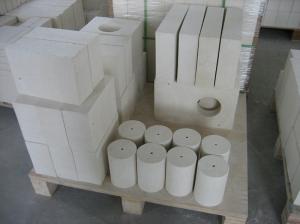Insulating Fire Brick - Refractory Mullite Insulating Refractory Brick JM 95
- Loading Port:
- Shanghai
- Payment Terms:
- TT OR LC
- Min Order Qty:
- 5000 kg
- Supply Capability:
- 10000 kg/month
OKorder Service Pledge
OKorder Financial Service
You Might Also Like
Refractory mullite insulating refractory brick JM 23
Okorder series heat insulation brick
Okorder series thermal insulation brick is an effective, energy saving, low carbon, environmental protection advanced, according to the ASTM standard manufacturing products. Okorder series products are best Li Ning and insulation in all types of industrial furnaces in the metallurgical field, aluminum, petrochemical, electric power and glass ceramic materials. They can be used as part of the working layer of thermal insulation or non - melting. Products have been widely used in the following furnace, achieved satisfactory results.
Application of heat preservation brick
Metallurgical Industry: blast furnace, hot blast furnace, heating furnace, etc..
Petrochemical Industry: ethylene cracking furnace, hydrogen production furnace, primary reformer, heating furnace, etc..
Ceramic industry: roller kiln, kiln, etc..
Glass industry: glass furnace regenerator, etc.
Carbon industry: carbon furnace, etc..
Aluminum electrolysis industry: aluminum reduction cell, etc.
Other industries: tunnel kiln, shuttle kiln, etc..
Advantages of heat insulation brick
Low thermal conductivity: more porosity will bring good thermal insulation effect, energy saving.
High crushing strength: high crushing strength, volume stability.
Low heat storage: small heat storage to absorb more heat, energy-saving effect is obvious.
Gao Chundu: iron, alkali metal impurity content is low.
The precise size: Brick size processing precision, special shape cutting and grinding, accelerate the brickwork.
Insulating brick picture
Common problem solutions
1. What products do you have?
We have all kinds of refractory bricks, refractory casting materials, mortar, cement, ceramic fiber products, etc..
Or you can browse our products to choose what you need.
2. How to control product quality?
With strict quality control system throughout the material selection and production process, we have the quality of refractory materials and ceramic fiber products to meet customer requirements.
From the selection of raw materials, the quality of our control to start. The quality certificate of the raw material is required, each batch of the products are to be tested in the use of the forward line. In the production process, the quality control by the workers, and then each piece of classification, and through the quality supervision and inspection.
3. Can you give me a brief introduction to the application of your product?
My company is mainly engaged in refractories in the steel, cement, glass, ceramics, petrochemical, electric power and other industries.
4. What information do you need if I need you?
In order to select the right products, we will provide us with information, such as the United States, technical data, order quantity, product application, etc..
If you have any questions, please contact us.
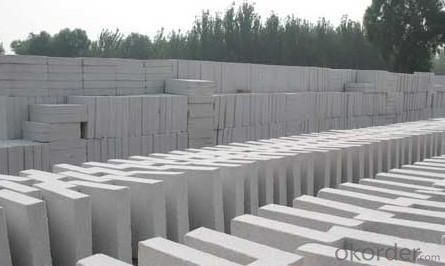
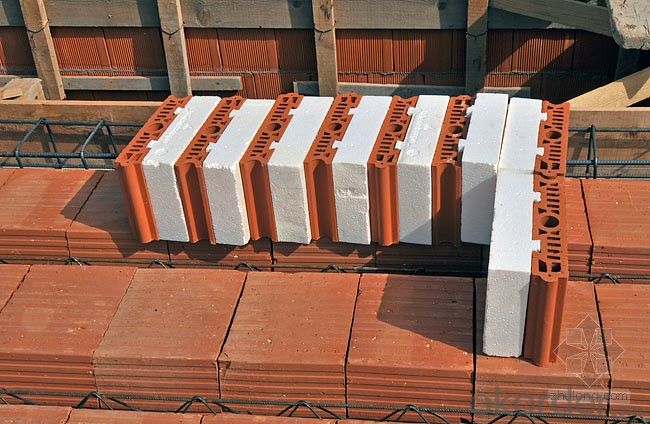
- Q: Can insulating fire bricks be used in the construction of smelting ovens?
- Yes, insulating fire bricks can be used in the construction of smelting ovens. They have excellent thermal insulation properties, high temperature resistance, and can withstand the intense heat generated during the smelting process. This makes them an ideal choice for lining the walls and floors of smelting ovens to maintain high temperatures and minimize heat loss.
- Q: Do insulating fire bricks require any special curing or firing process before use?
- No, insulating fire bricks do not require any special curing or firing process before use. They are ready to be used as soon as they are installed.
- Q: Are insulating fire bricks resistant to metal penetration?
- Insulating fire bricks possess a general resistance to the penetration of metal. These bricks are composed of refractory materials with high melting points and are engineered to endure elevated temperatures. Their application is often found in environments subject to extreme heat, such as furnaces and kilns. The thermal conductivity of insulating fire bricks is low, denoting their effectiveness in impeding heat transfer. This characteristic aids in maintaining a cool outer surface for the bricks, even when the interior is subjected to intense heat. Consequently, such bricks exhibit the ability to withstand the infiltration of molten metal. Nonetheless, it is worth noting that the resistance of insulating fire bricks to metal penetration varies according to the individual composition and quality of the bricks. Inferior-grade bricks may not offer the same level of resistance as their higher-quality counterparts. Furthermore, the duration and intensity of exposure to heat can also influence the bricks' resistance. In conclusion, while insulating fire bricks generally exhibit resistance to metal penetration, it is vital to consider the specific attributes and quality of the bricks employed, as well as the conditions under which they are exposed to heat.
- Q: Are insulating fire bricks suitable for insulation in petrochemical plants?
- Yes, insulating fire bricks are suitable for insulation in petrochemical plants. These bricks are made from lightweight refractory materials and have excellent thermal insulation properties. They can withstand high temperatures and provide insulation against heat transfer, making them ideal for use in petrochemical plants where insulation is crucial for safety and energy efficiency.
- Q: Do insulating fire bricks absorb moisture?
- No, insulating fire bricks do not absorb moisture. These bricks are made from materials that are resistant to moisture absorption, such as high-alumina or silica. This makes them ideal for applications where moisture resistance is required, such as in high-temperature environments or when used as insulation in fireplaces or kilns. The non-absorbent properties of insulating fire bricks help to maintain their structural integrity and insulation performance over time, even in humid conditions.
- Q: Are insulating fire bricks easy to handle and install?
- Insulating fire bricks are known for their ease of handling and installation. They possess a lightweight composition, enabling effortless transportation and portability. Furthermore, their user-friendly design, in terms of shape and size, facilitates simple manipulation and installation. The majority of insulating fire bricks are equipped with pre-drilled holes or grooves, further streamlining the installation process. Moreover, these bricks offer high versatility as they can be easily cut or shaped to accommodate specific dimensions or requirements. As a result, even individuals with limited expertise or familiarity in masonry work find insulating fire bricks to be manageable and straightforward to handle and install.
- Q: Can insulating fire bricks reduce heating or cooling costs?
- Insulating fire bricks possess the ability to decrease heating or cooling expenses. These bricks are specially designed to exhibit a high level of thermal insulation, meaning they possess low thermal conductivity and can effectively hinder the transfer of heat between a building's interior and exterior. In the construction of fireplaces, ovens, or kilns, the utilization of insulating fire bricks aids in retaining heat within these structures. This enables them to achieve and maintain higher temperatures while consuming less energy. Consequently, this leads to substantial savings on heating costs, as the desired temperature can be achieved with reduced energy usage. Similarly, when employed in the construction of walls, insulating fire bricks serve to minimize heat transfer between a building's inside and outside. This results in decreased heating or cooling requirements, as the insulation helps to maintain a consistent indoor temperature. Subsequently, less energy is needed to heat or cool the building, resulting in lower energy bills and reduced overall heating or cooling expenses. It should be noted that the effectiveness of insulating fire bricks in reducing heating or cooling costs can vary based on factors such as overall building insulation, structure size and design, and climate conditions. Nevertheless, in general, the utilization of insulating fire bricks can contribute to energy efficiency and cost savings in heating or cooling systems.
- Q: Do insulating fire bricks have a high heat storage capacity?
- Yes, insulating fire bricks do have a high heat storage capacity. These bricks are designed to retain heat for extended periods of time, making them ideal for applications that require heat insulation and retention, such as furnaces, kilns, and fireplaces.
- Q: Can insulating fire bricks be used for insulation in steam pipes?
- Insulating fire bricks are indeed a viable choice for insulating steam pipes due to their exceptional ability to withstand high temperatures and provide excellent thermal insulation. With their low thermal conductivity, these bricks effectively impede heat transfer, making them perfect for insulating steam pipes. This quality aids in minimizing heat loss and maintaining the steam's temperature within the pipes. Furthermore, the lightweight nature and easy installation of insulating fire bricks make them a convenient option for insulating steam pipes.
- Q: Can insulating fire bricks be used in rotary kilns?
- Yes, insulating fire bricks can be used in rotary kilns. Insulating fire bricks are designed to have low thermal conductivity, which helps to reduce heat loss and improve energy efficiency in high-temperature applications like rotary kilns. Additionally, these bricks are lightweight and have good thermal shock resistance, making them suitable for the harsh and dynamic conditions within a rotary kiln.
Send your message to us
Insulating Fire Brick - Refractory Mullite Insulating Refractory Brick JM 95
- Loading Port:
- Shanghai
- Payment Terms:
- TT OR LC
- Min Order Qty:
- 5000 kg
- Supply Capability:
- 10000 kg/month
OKorder Service Pledge
OKorder Financial Service
Similar products
Hot products
Hot Searches
Related keywords
